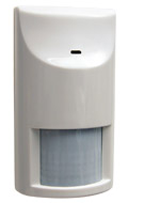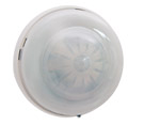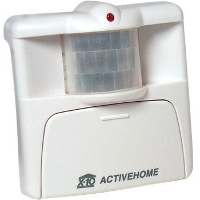Difference between revisions of "Motion Sensors"
| Line 5: | Line 5: | ||
[[File:Z-Wave.png|right|frame|Z-Wave Motion and Temperature Sensor]] | [[File:Z-Wave.png|right|frame|Z-Wave Motion and Temperature Sensor]] | ||
<h3 style="display: inline-block; background:#ffffff; font-weight:bold; border-bottom:2px solid #6093cc; text-align:left; color:#000; padding:0.2em 0.4em;"><br />Overview</h3> | <h3 style="display: inline-block; background:#ffffff; font-weight:bold; border-bottom:2px solid #6093cc; text-align:left; color:#000; padding:0.2em 0.4em;"><br />Overview</h3> | ||
Motion sensors are useful for assuring that your loved one is OK and moving around as you would expect. | Motion sensors are useful for assuring that your loved one is OK and moving around as you would expect. Simply checking in and seeing that your loved one is up and moving at the usual time, and moving around in a normal, predictable way, can provide peace of mind. The sensors can be placed such that they can help you answer questions if you have some basic concerns. For example, you may want to know that your loved one is eating meals, and a motion sensor in the kitchen or the refrigerator tells you if there is movement at mealtimes. You may want to know that your loved one hasn't fallen in the bathroom, and a motion sensor there can tell you if there is excessive motion in that one room for longer than you would expect. Rules can be set to send caregivers alerts, whether by phone, text, or email, if something isn't quite right.<br /><br /> | ||
<h3 style="display: inline-block; background:#ffffff; font-weight:bold; border-bottom:2px solid #6093cc; text-align:left; color:#000; padding:0.2em 0.4em;">Types of Sensors</h3> | <h3 style="display: inline-block; background:#ffffff; font-weight:bold; border-bottom:2px solid #6093cc; text-align:left; color:#000; padding:0.2em 0.4em;">Types of Sensors</h3> | ||
Revision as of 20:56, 23 May 2012
Overview
Motion sensors are useful for assuring that your loved one is OK and moving around as you would expect. Simply checking in and seeing that your loved one is up and moving at the usual time, and moving around in a normal, predictable way, can provide peace of mind. The sensors can be placed such that they can help you answer questions if you have some basic concerns. For example, you may want to know that your loved one is eating meals, and a motion sensor in the kitchen or the refrigerator tells you if there is movement at mealtimes. You may want to know that your loved one hasn't fallen in the bathroom, and a motion sensor there can tell you if there is excessive motion in that one room for longer than you would expect. Rules can be set to send caregivers alerts, whether by phone, text, or email, if something isn't quite right.
Types of Sensors
There are a variety of models of motion sensors that can be used with your GrandCare system. Your GrandCare rep or installer should help you choose the sensors that are right for you. If your needs change, different sensors can be added to the system at a later date.
One of the sensor models can track both motion and indoor temperature. Another is pet-tolerant and won't be triggered by the motion of smaller pets. Another is suitable for high-traffic areas. Others simply track motion. Most can sit on a shelf or be mounted on a wall, although there is a ceiling-mounted model as well. Sensors should be positioned so that they aren't blocked, and so that they don't accidentally get tipped over or turned around.
Checking the Motion Graphs




